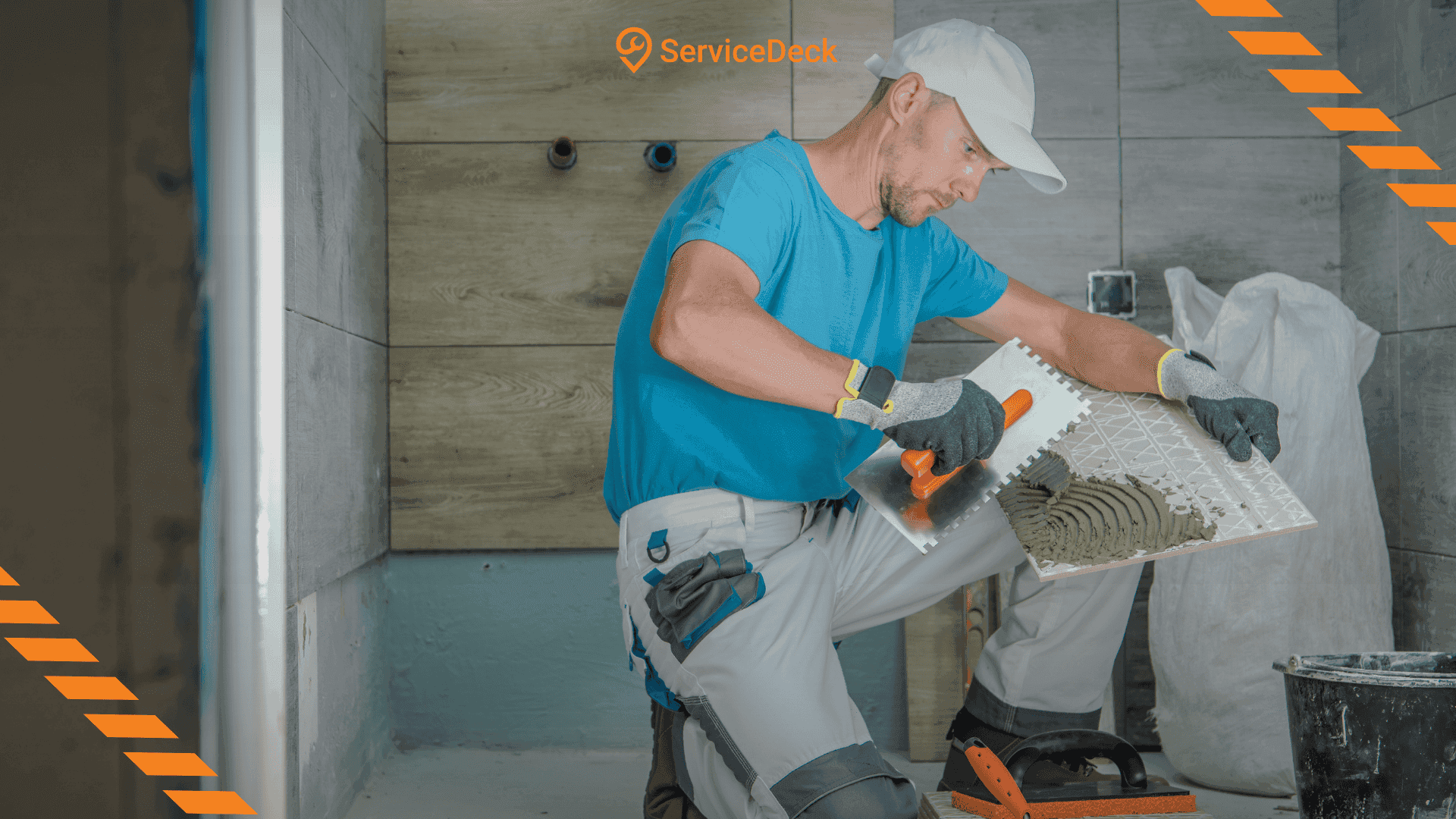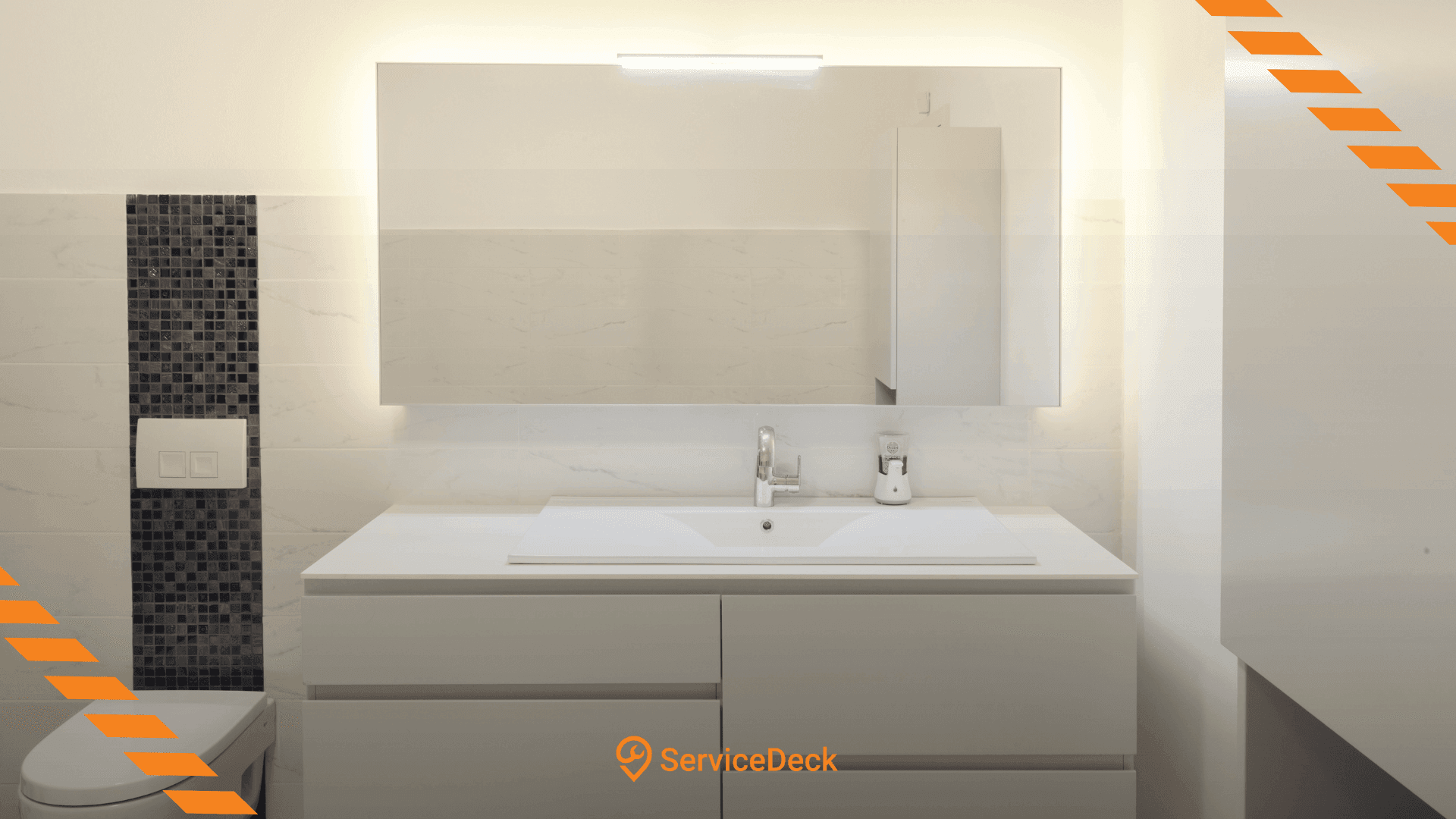A bathroom renovation is one of the most rewarding home improvement projects, adding both comfort and value to your home. However, to ensure the best results, careful planning is crucial.
Here are 10 Key Things to Consider before starting your Bathroom Remodel.
1. Set a realistic Budget and Timeline
A bathroom remodel typically costs between $10,000 and $25,000, but unexpected issues like water damage can drive costs even higher. To avoid surprises like this, inspect before setting your budget and include a 20% contingency fund.
Create your bathroom renovation project on ServiceDeck and receive up to 5 quotes from Service Providers to compare prices on the market and choose the one that works for you best.
Defining your budget, layout, and must-have features will also help prevent delays and costly mistakes. Explore different interior styles, suitable materials, and fixtures to balance aesthetics with functionality.
A trending bathroom style for 2025 is achieving a seamless, uniform look by using the same tile for floors, walls, and even the shower. Focus on natural materials or high-quality alternatives to bring a sense of calm and harmony. These spaces evoke a true sanctuary vibe, with influences from Japanese-inspired design!
2. Ensure you have all the Products before Starting
Ordering materials in advance will keep your renovation on schedule. Tiles, vanities, bathtubs, and fixtures should arrive before demolition begins to avoid delays, that could disrupt a renovation team’s workflow.
Remember if you ordered some custom items, usually it takes 6-12 weeks to be delivered, so plan accordingly.
3. Choose a Style That Aligns with Practical Use
A bathroom is the most frequently used space in your home. While aesthetics are important, it should also be practical for daily use. Consider slip-resistant flooring, easy-to-clean surfaces, and fixtures that suit your household’s needs.
If you have kids or pets, prioritize safety by selecting quality materials.
4. Don’t Cheap Out on Renovation Materials
Following up on the previous point, investing in quality materials is crucial for safety and durability. A bathroom is a high-moisture environment so water-resistant flooring, high-quality tiles, and durable fixtures will prevent wear and tear over time.
Skimping on materials such as ceramic or porcelain tiles, a durable bathtub, and a quality vanity in the early stages of the renovation may lead to expensive repairs later.
5. Check for Water Damage - Take all the Walls Down
Hidden water damage is a common issue in older bathrooms. If possible, take the walls down to inspect for leaks, mold, or structural damage. Look for signs like peeling paint, soft drywall, musty odors, or warped flooring.
Water damage repair costs can vary from $3,000 to $8,000, so fixing issues early saves you money. Keep in mind moisture exposure can also lead to mold, which may cause respiratory issues.
6. Heated Floors
Heated floors are a game-changer, adding both comfort and efficiency to your bathroom. No more freezing tiles on winter mornings – radiant heating provides consistent warmth and also can cut energy costs by up to 25%, according to the U.S. Department of Energy.
The best time to install them is during renovation, as they go beneath the tiles.

7. Maximize Space with Light and Color
Lighting and specific colors can make your bathroom feel larger and more welcoming. On the contrary, a lack of lighting can make even a spacious room feel cramped. To avoid this use LED mirrors, recessed lighting, and skylights for better brightness, and opt for large windows if possible.
When choosing the wall paint remember light-colored walls reflect natural light. For more tips, check out our previous article on how to choose the right lighting for every room.
8. Remember Storage Solutions
Small bathrooms often face storage challenges, but there are smart solutions to keep things organized. Instead of bulky cabinets, try recessed shelving in shower walls, hidden drawer compartments in vanities, or mirrored medicine cabinets for extra storage without taking up space.
Vertical storage, like wall-mounted racks and floating shelves, can also help maximize room.
9. Install Accessible Outlets
Strategically placed outlets can make a big difference in convenience. Usually, homeowners forget about this factor during the planning process. Try to think where you’ll plug in hairdryers, electric razors, and other devices.
Consider installing outlets inside drawers or cabinets for a clutter-free countertop. For better vision, create your project and request a consultation with a professional on ServiceDeck.
10. Don't Forget about Ventilation
Proper ventilation is critical for preventing mold, paint peeling, and even structural damage. An exhaust fan is a must-have in any bathroom remodel.
Choose a fan with the right capacity for your space and ensure it vents outside, not into the attic.
Final Tips
A successful bathroom renovation requires attention to both design and functionality. By planning ahead, investing in quality materials, and ensuring proper lighting, storage, and ventilation, you can create a bathroom that is both beautiful and practical for years to come.
Ready to start your bathroom renovation? ServiceDeck is here to help with expert guidance and professional service!





